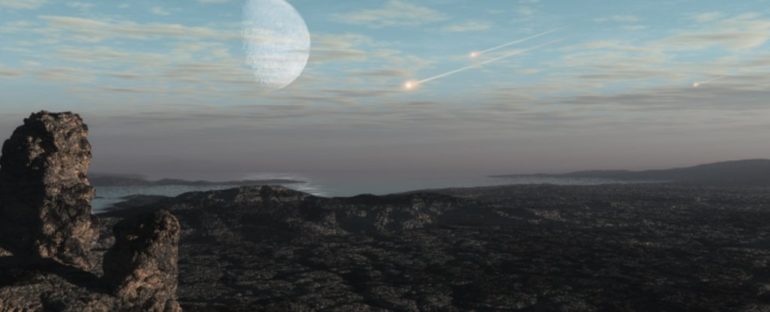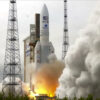For a period of Earth’s history, between roughly 2.5 to 4 billion years ago, our planet was a punching bag for asteroids.
During this time, Earth was absolutely pelted with large space rocks, compared to the relative quiet of our existence today. This activity would have produced significant alterations to the chemistry of the planet’s atmosphere – but the scale and shape of those alterations, especially the effect on oxygen levels, has been difficult to quantify.
Now, a study of tiny, once-molten particles in Earth’s crust has revealed that these asteroid impacts were far more numerous than we had thought, which may have delayed the oxygenation of Earth’s atmosphere.
These particles are called impact spherules, and they’re created when an asteroid slams into Earth, generating such intense heat that the crust melts and sprays into the air. When the material settles, cools, and hardens, it forms a layer of spherules in the planet’s crust.
In recent years, far more of these spherules have been unearthed in drill cores and excavations, which means, in turn, that the asteroid collision rate may be 10 times higher than previous analyses suggested. This would have had a much more significant effect on Earth’s oxygen levels than previous models.
“Current bombardment models underestimate the number of late Archean spherule layers,” says planetary geologist Simone Marchi of the Southwest Research Institute. “[This suggests] the impactor flux at that time was up to 10 times higher than previously thought.”
All of this extra rock from space generates chemistry that results in a lot more oxygen being held back from the atmosphere.
How, when, and why Earth’s atmosphere became rich with oxygen is deeply important to our understanding of planet habitability. Most multicellular organisms on Earth can’t live without oxygen; without it, we probably wouldn’t be here.
For reasons not fully understood, however, oxygen levels didn’t start to significantly rise in what we call the Great Oxidation Event until the emergence of photosynthesizing cyanobacteria on the scene 2.4 billion years ago.
Asteroid bombardment, the team’s new analysis reveals, could have been one of the mechanisms at play preventing oxygen levels from rising. As space rocks repeatedly slammed into Earth, their impact vapors would have removed the limited amounts of oxygen present in the early atmosphere.
“Late Archean bombardment by objects over 6 miles in diameter would have produced enough reactive gases to completely consume low levels of atmospheric oxygen,” said astronomer and geologist Laura Schaefer of Stanford University.
“This pattern was consistent with evidence for so-called ‘whiffs’ of oxygen, relatively steep but transient increases in atmospheric oxygen that occurred around 2.5 billion years ago.
“We think that the whiffs were broken up by impacts that removed the oxygen from the atmosphere. This is consistent with large impacts recorded by spherule layers in Australia’s Bee Gorge and Dales Gorge.”
The team’s new analysis on spherule layers challenges previous impact models and scales up the intensity of collisions, finding that an asteroid larger than 10 kilometers (6 miles) across would have hit Earth once every 15 million years or so.
That may seem infrequent, but geologically speaking, that’s a lot of big asteroids – and 10 times more frequent than we had thought.
Modelling then revealed the cumulative oxygen sink effect these impacts would have had. Only once bombardment slowed did oxygen levels start to rise, changing Earth’s surface chemistry and transforming the planet into a habitable world. This, the researchers now believe, is no coincidence.
“Impact vapors caused episodic low oxygen levels for large spans of time preceding the Great Oxidation Event,” Marchi said.
“As time went on, collisions became progressively less frequent and too small to be able to significantly alter post-Great Oxidation Event oxygen levels. The Earth was on its course to become the current planet.”
The research has been published in Nature Geoscience.



